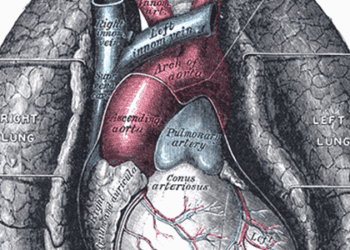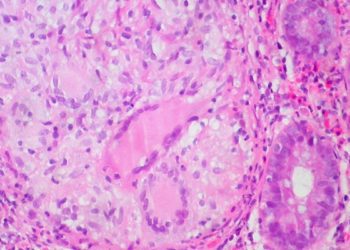[JAMA] Prevalence and prognosis of unrecognized myocardial infarction determined by cardiac magnetic resonance in older adults
Image: CC. MRI of the heart.
Primer: Pathology studies suggest that subclinical ruptures of coronary atherosclerotic plaques occur frequently, which may result in unrecognized myocardial infarction (MI). Previous studies have sought to ascertain the prevalence of unrecognized MI using electrocardiograms (ECGs), though they suffer significant limitations (e.g., limited sensitivity, resolving Q waves over time). As a result, the true prevalence of unrecognized MIs may be higher than these studies suggest.
This [randomized] study: Published this week in the Journal of the American Medical Association, a prospective cohort study conducted in Iceland sought to examine the prevalence and prognosis of unrecognized MI. Prevalence was determined by using cardiac magnetic resonance (CMR) imaging with late galodinium enhancement (LGE), which has been extensively validated for the detection of MI. Unrecognized MIs were defined as being detected on CMR imaging but not previously mentioned in hospital or surveillance records. The main outcome measures were prevalence and mortality from MI through September 1, 2011.
A final cohort of 936 patients was followed in this study, of which 670 were randomly selected and 266 had diabetes. The prevalence of unrecognized MI by CMR imaging was found to be 17% (95% CI 14-19%, P<0.001), and the prevalence was 21% in diabetic patients (95% CI 17-26%, P<0.001). The prevalence by ECG was previously found to be 5% (95% CI 4-6%, P<0.001). Of the 248 MIs detected by CMR, 157 were unrecognized (63.3%). Moreover, patients with unrecognized MI by CMR had higher mortality compared to patients with no MI (hazard ratio 1.81; 95% CI 1.28-2.56). Even after adjusting for age, sex, diabetes, and history of recognized MI, unrecognized MI by CMR remained associated with increased mortality (hazard ratio 1.45; 95% CI 1.02-2.06), while unrecognized MI by ECG was not associated with increased mortality.
In sum: Using CMR imaging, this study identified a higher prevalence of unrecognized MI compared to previous studies using ECG. Moreover, the findings suggest that unrecognized MI by CMR is associated with increased mortality, while unrecognized MI by ECG is not. Interestingly, the majority of MIs identified during the study were previously unrecognized (63.3%) and this presents a significant public health issue, suggesting limitations in current prevention strategies.
Click to read the study in JAMA
© 2012 2minutemedicine.com. All rights reserved. No works may be reproduced without written consent from 2minutemedicine.com. DISCALIMER: Posts are not medical advice and are not intended as such. Please aee a healthcare professional if you seek medical advice.




